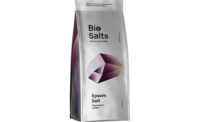Cover Story: Packaging Outlook
What’s in store for 2017: top 5 trends for CPGs

Click-and-collect, which enables consumers to order items online before picking them up at the physical location, provides consumers yet another form of convenience when shopping.
Consumer packaged goods companies (CPGs) continue to face major changes across the industry. Ecommerce and digital marketing continue to rise steadily in importance, though physical stores show no signs of going away. In fact, store formats continue to evolve, and new brick-and-mortar competitors are entering the marketplace. Additionally, localized assortments and more efficient inventory management are top priorities for many companies, retailers and suppliers alike. And all of these changes are happening in a world where large brands are struggling to drive organic growth, prompting a rise in acquisitions and company-sponsored venture funds. Given this dynamic backdrop, here is APT’s, (a cloud-based analytics software company; predictivetechnologies.com) perspective on the top five CPG trends for 2017:
#1: Determining the optimal growth strategy: Build, buy or invest?
CPG startups are giving established industry players a run for their money. These more nimble companies are shaking up the market by providing consumers with more convenience, greater product transparency and healthier ingredients.
While some established food CPGs are taking a “do-it-yourself” approach to compete with these new players (e.g., Campbell’s launch of a healthier soup line Well Yes!), many CPGs are taking the “if you can’t beat ’em, buy ’em” approach. Some examples include Dannon’s purchase of WhiteWave, ConAgra’s acquisition of Frontera Foods, and Dr Pepper Snapple’s purchase of Bai Brands. General Mills is taking a slightly different approach by launching a venture capital unit to invest in promising food startups. In many cases, companies are utilizing multiple strategies in combination, creating an interesting set of assessments on whether to build, buy or invest in new growth opportunities.
#2: Cracking the omnichannel challenge
Ecommerce sales in the CPG industry have been growing at an enviable rate of 42% per year1. This growth trajectory is likely to continue, especially as click-and-collect services multiply. Click-and-collect, which enables consumers to order items online before picking them up at the physical location, provides consumers yet another form of convenience when shopping. The continuum of where, when and how shoppers fill their needs will simply continue to grow.
Selling online poses many challenges for CPGs, particularly for instant consumable companies that rely heavily on impulse purchases. Omnichannel is a new realm for CPGs, and leading companies are trying many new strategies to account for the inability to utilize in-store sales drivers like fixtures, signage and displays in the checkout lanes. For instance, organizations like Nestlé are partnering with Instacart to provide coupons and advertisements to online consumers.
Ecommerce opens up many opportunities for CPGs to get smarter about their consumers and investments. For example, CPGs can leverage data from consumers’ previous online purchases to tailor ads and coupons to encourage repeat purchases and trade-up to higher margin products. As CPGs increase online trade spend investments, however, it is vital to understand the true omnichannel impact for each initiative – is it driving incremental sales or simply cannibalizing in-store transactions?
#3: Differentiating the in-store experience
Despite the increasing growth of omnichannel, 90% of retail sales still occur in brick-and-mortar locations2. Suppliers must continue to provide reasons for consumers to enter the store by differentiating the shopping experience in conjunction with their retail partners.
Consequently, CPGs are getting more creative about enticing consumers into the store and capturing their attention once they arrive. For instance, Colgate offered free oral health screenings in select Walgreens locations; and Hershey’s Candy Experience, a store-within-a-store concept, creates a distinctive shopping experience. Magnum and Chobani are pushing the limits of enhancing the in-store experience even further by opening their own branded cafés.
#4: Getting in-store assortment right
Assortment and distribution are the lifeblood of a CPG – that will not change. In fact, we expect these areas to grow in importance given that many retailers are reducing the vast number of products and pack sizes offered in-stores in an effort to create a more streamlined shopping experience, simplify supply chain logistics and reduce out-of-stocks. Accordingly, CPGs are working to determine the optimal assortment to offer as shelf space gets more constrained. For instance, P&G rationalized one-sixth of its Olay products to focus on core products instead. Quantifying the impact of each assortment change will help CPGs make smarter decisions about which products to prioritize on the shelf to maintain a growth trajectory despite the reduced space.
In addition to simplifying product assortment, many retailers are also trying to create more localized shopping experiences for consumers, such as Kroger’s Main & Vine (a fresh and local food shop only in select markets) targeted toward younger, more urban populations. Therefore, executives need to think carefully about localizing assortment by store type and demographics to achieve this goal.
#5: Optimizing pack size and price
In conjunction with improving assortment, CPGs must continue optimizing price and pack size to meet changing consumer demands in 2017. Consumers increasingly seek products that fit their on-the-go lifestyles, prompting brands like Organic Valley to introduce smaller pack sizes. Coca-Cola’s mini-cans are another example of introducing varied sizes to tap into new consumer usage occasions to drive differential growth. It is vital to know which pack sizes will drive incremental sales without cannibalizing other pack sizes, especially given the retail pressure for streamlined assortments.
Retailers such as Kroger are offering more premium private label options, creating even more competition for CPGs at various price points. This heightened competition is causing CPGs to reconsider the price points of core items, like Kellogg’s reevaluation of its Cheez-It brand prices. As competition from private label increases, CPGs need to understand not only the optimal price spread between their items and those of competitors, but also the right price spread among their own products.
Leveraging in-market testing in response to these trends
2017 will bring a new wave of opportunities for the CPG industry, and organizations that try innovative ideas will be able to capitalize on these changes.
However, 40% of all business ideas do not break even – the best approach to determine which ideas will be profitable is through in-market experimentation. Testing each initiative in a subset of locations or markets and comparing performance to similar locations or markets that did not implement the change is the only way to determine the true impact of each program. Further, testing can reveal how ideas can be fine-tuned and targeted to a subset of locations to maximize return on investment. In fact, many ideas that are unsuccessful overall can generate significant value if implemented in only a small pocket of stores.
CPGs can leverage in-market testing to respond to each of these trends – the launch of a new product, omnichannel marketing tactics, innovative in-store experience ideas, assortment changes, and price and pack size modifications. In fact, retailers are demanding that suppliers justify each investment with empirical proof of the initiative’s impact. Organizations with a disciplined testing process will be best positioned to win this year.
1. http://fortune.com/2016/02/11/amazon-ecommerce-consumer-packaged-goods/
|
APT, a MasterCard company, is a leading cloud-based analytics software company that enables organizations to rapidly and precisely measure cause-and-effect relationships between business initiatives and outcomes to generate economic value. The intuitive and proprietary Test & Learn® software utilizes sophisticated algorithms to analyze large amounts of data, enabling business leaders to conduct experiments and allowing them to make optimal decisions and implement business initiatives at scale. APT also offers products that support decision-making for specific business needs including transaction analysis, space planning, promotion design, category management and location selection. APT’s client portfolio features some of the world’s best known brands, including Walmart, Starbucks, Coca-Cola, Victoria’s Secret, American Family, Choice Hotels International, SUBWAY, TD Bank, T-Mobile and others. Visit www.predictivetechnologies.com to learn more. |
Looking for a reprint of this article?
From high-res PDFs to custom plaques, order your copy today!






